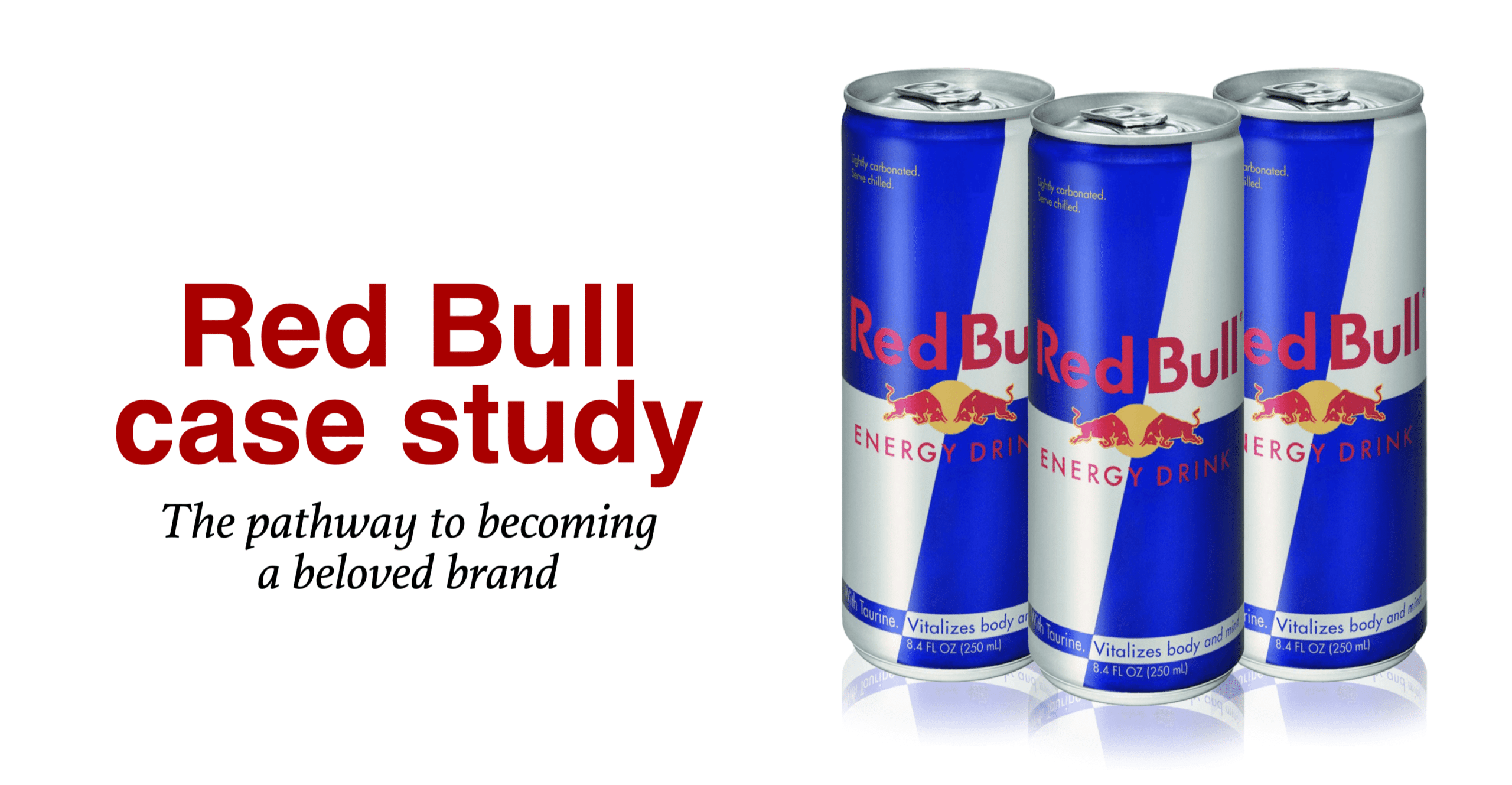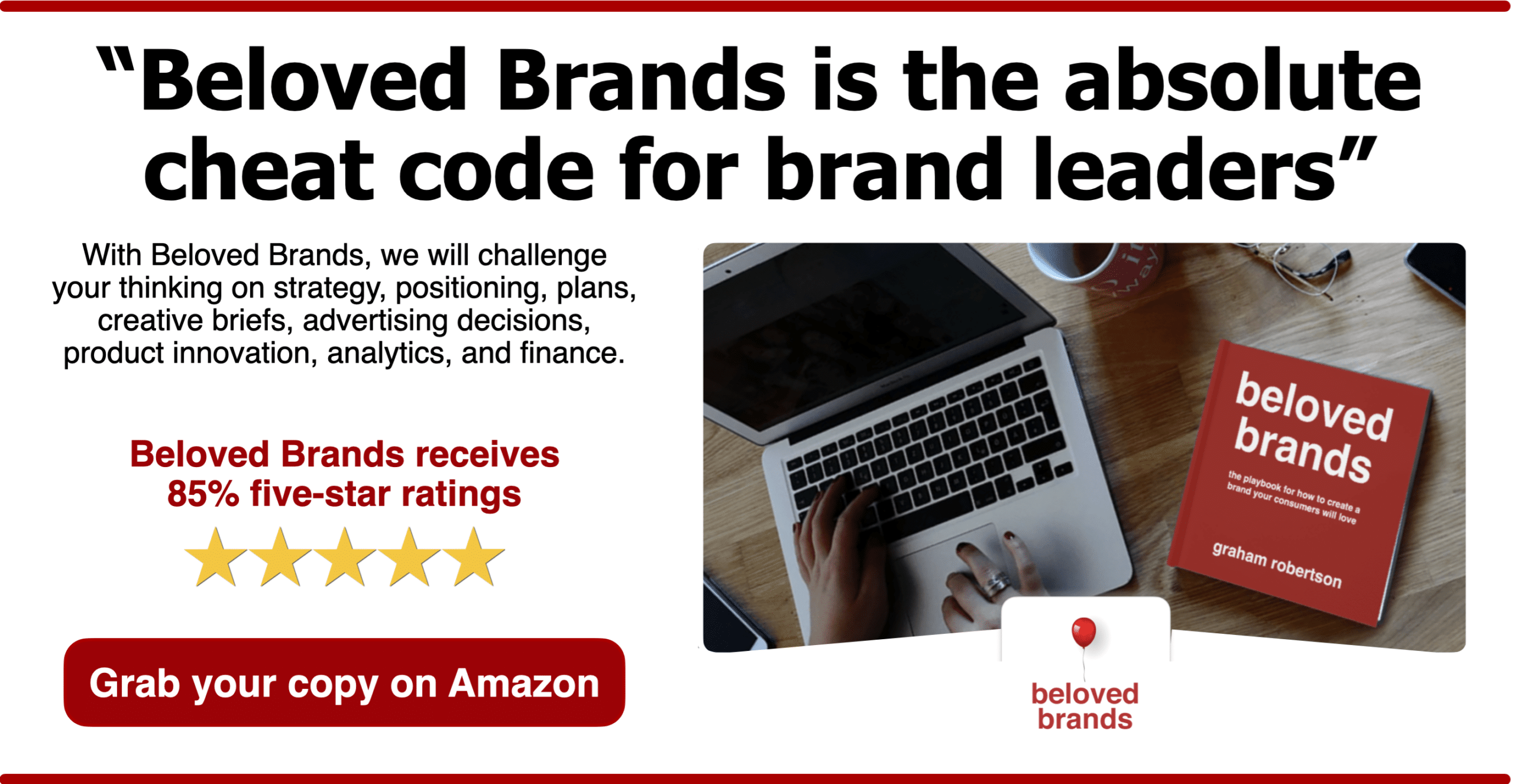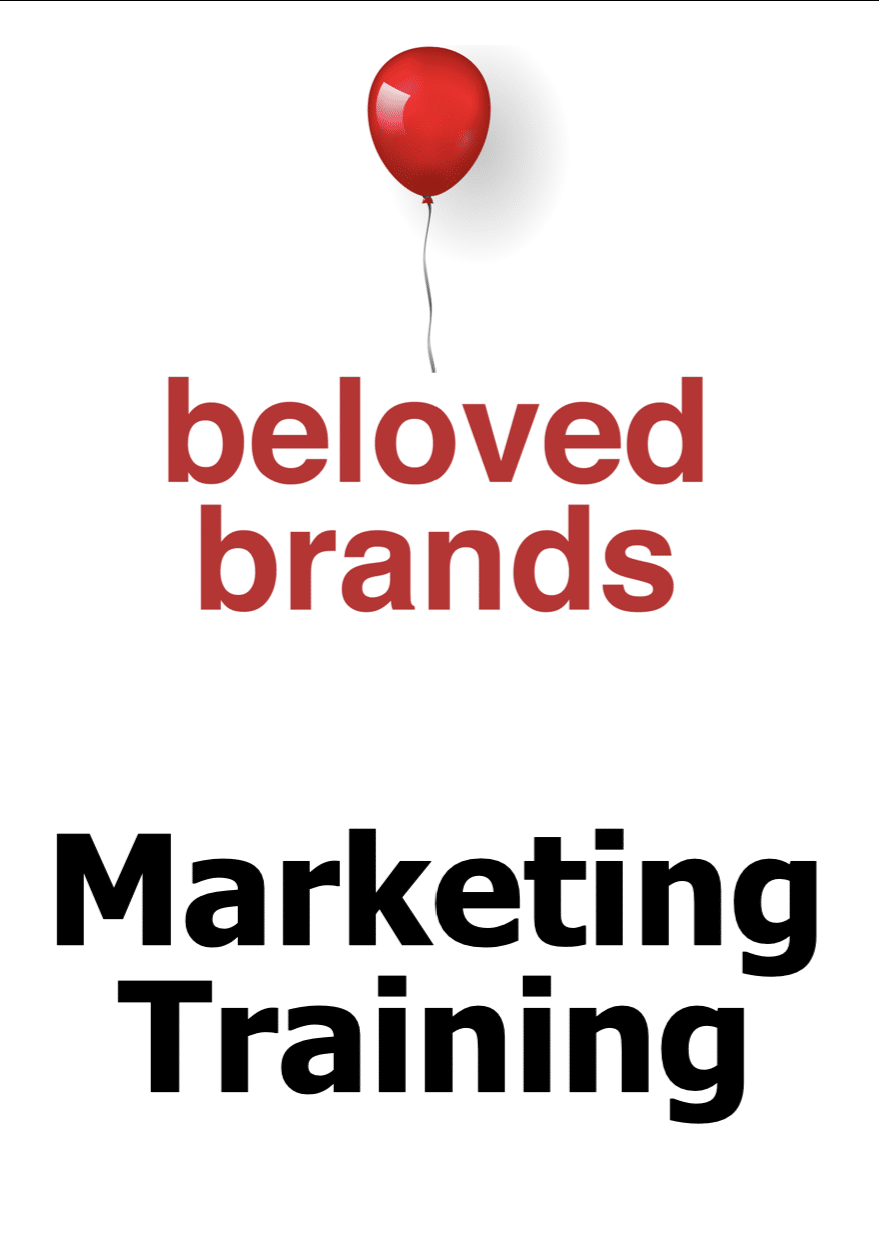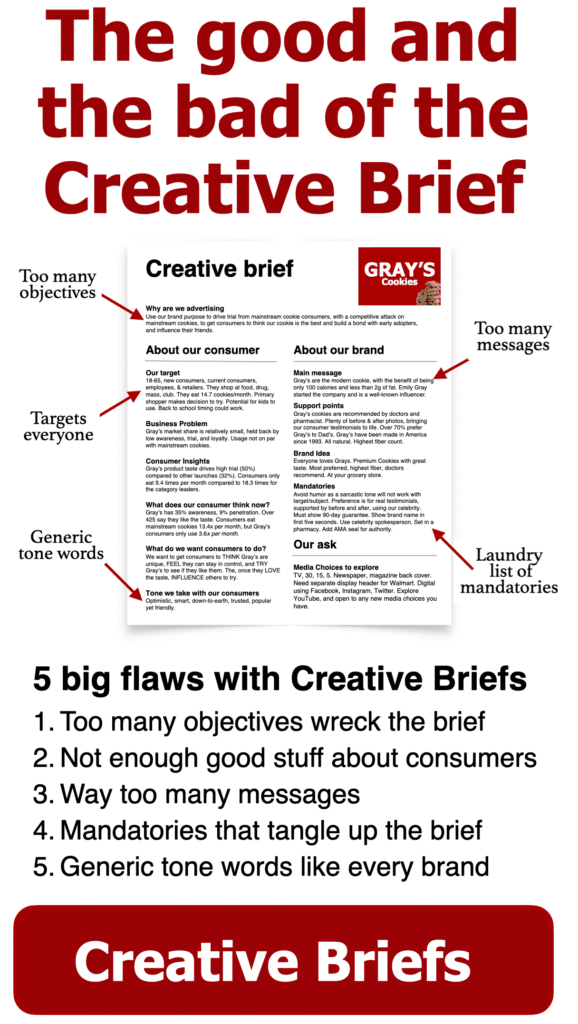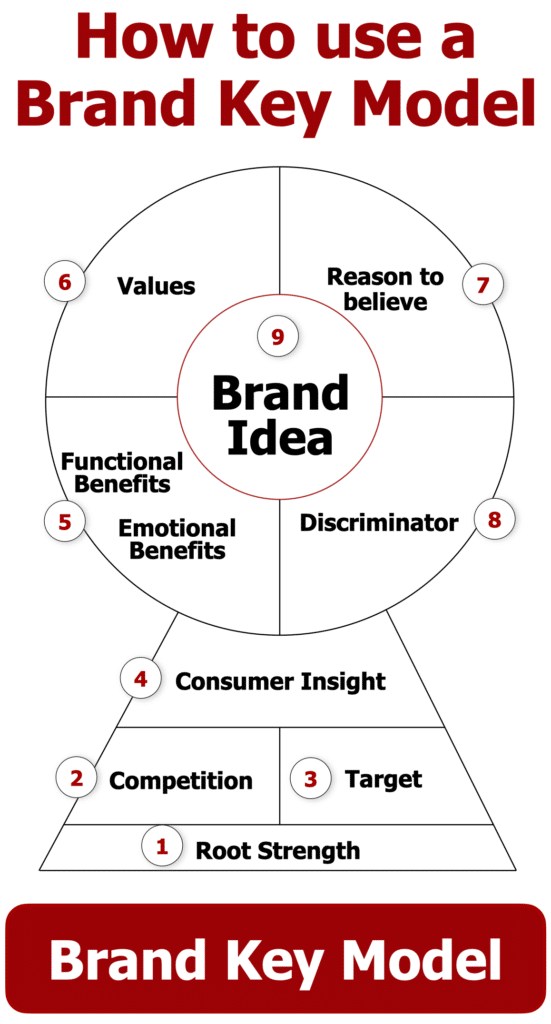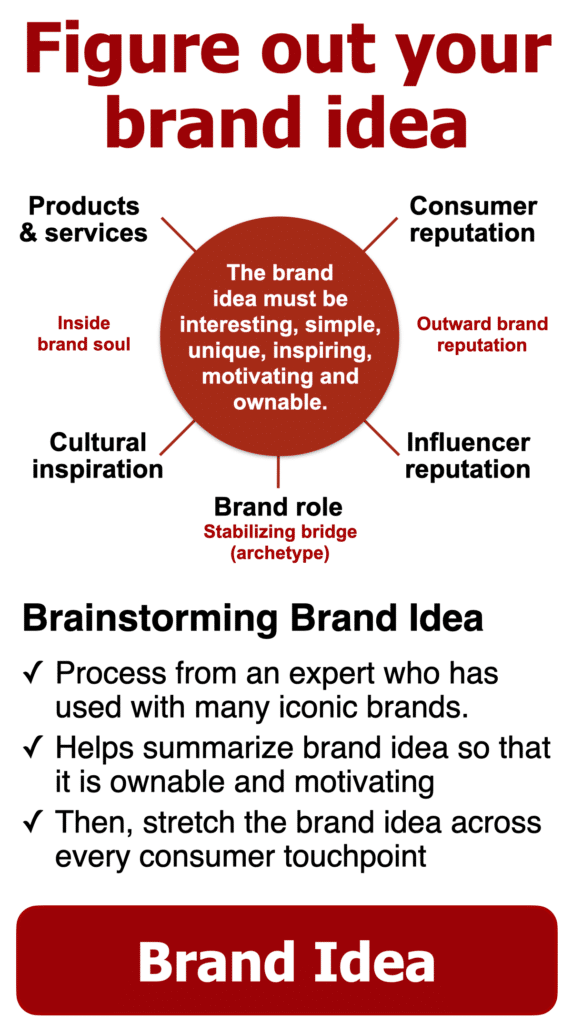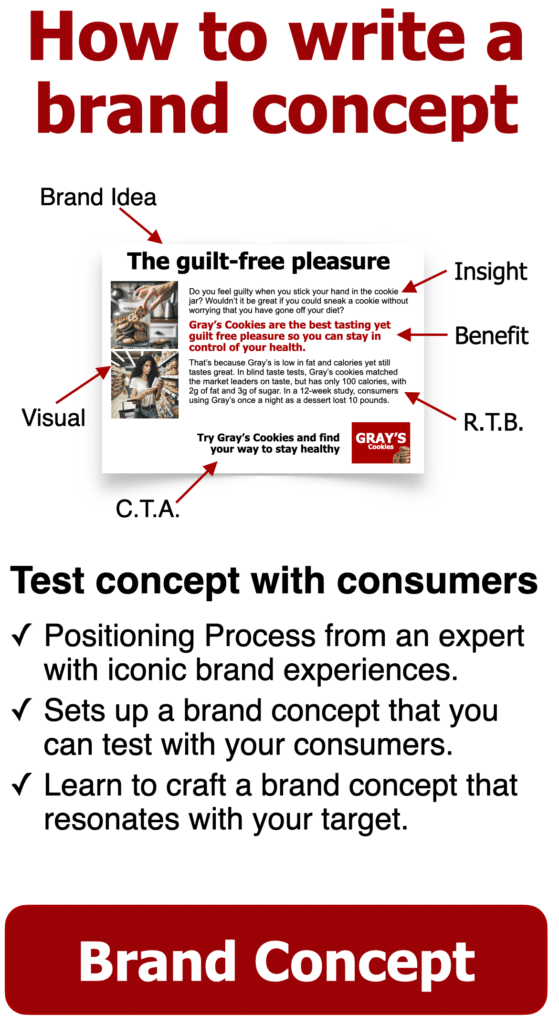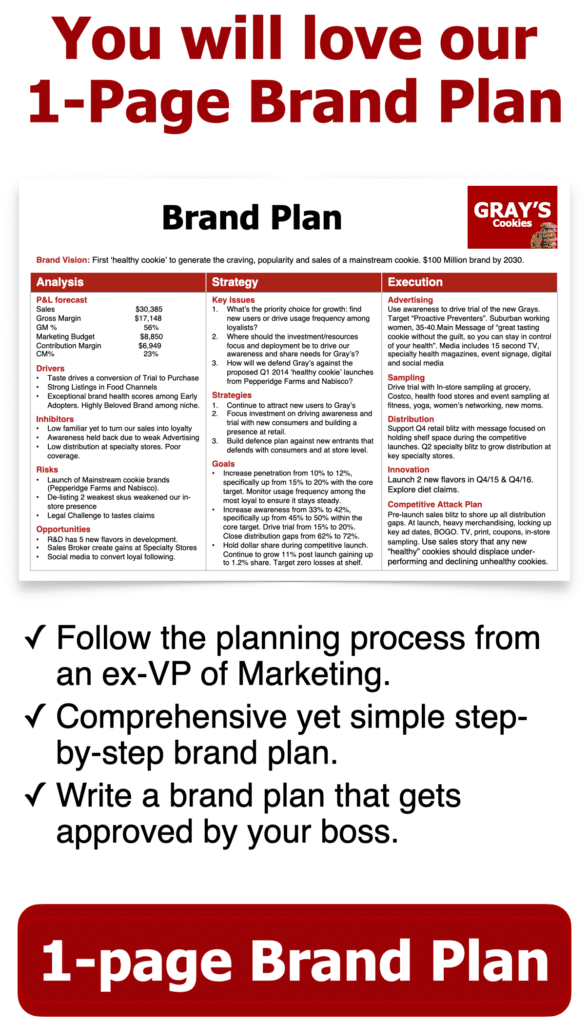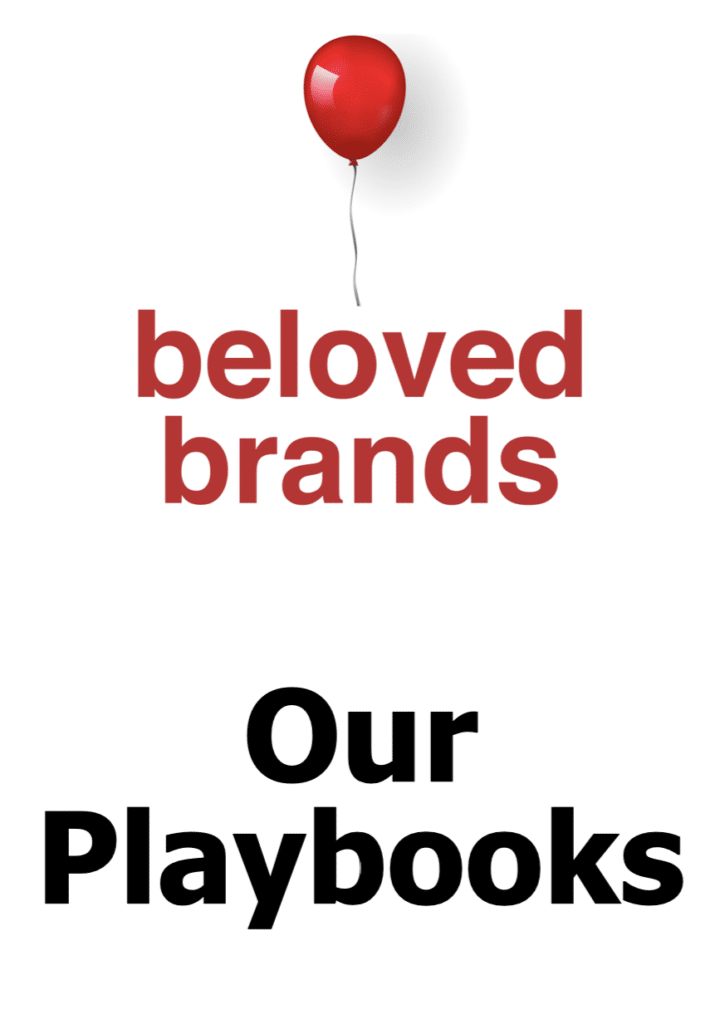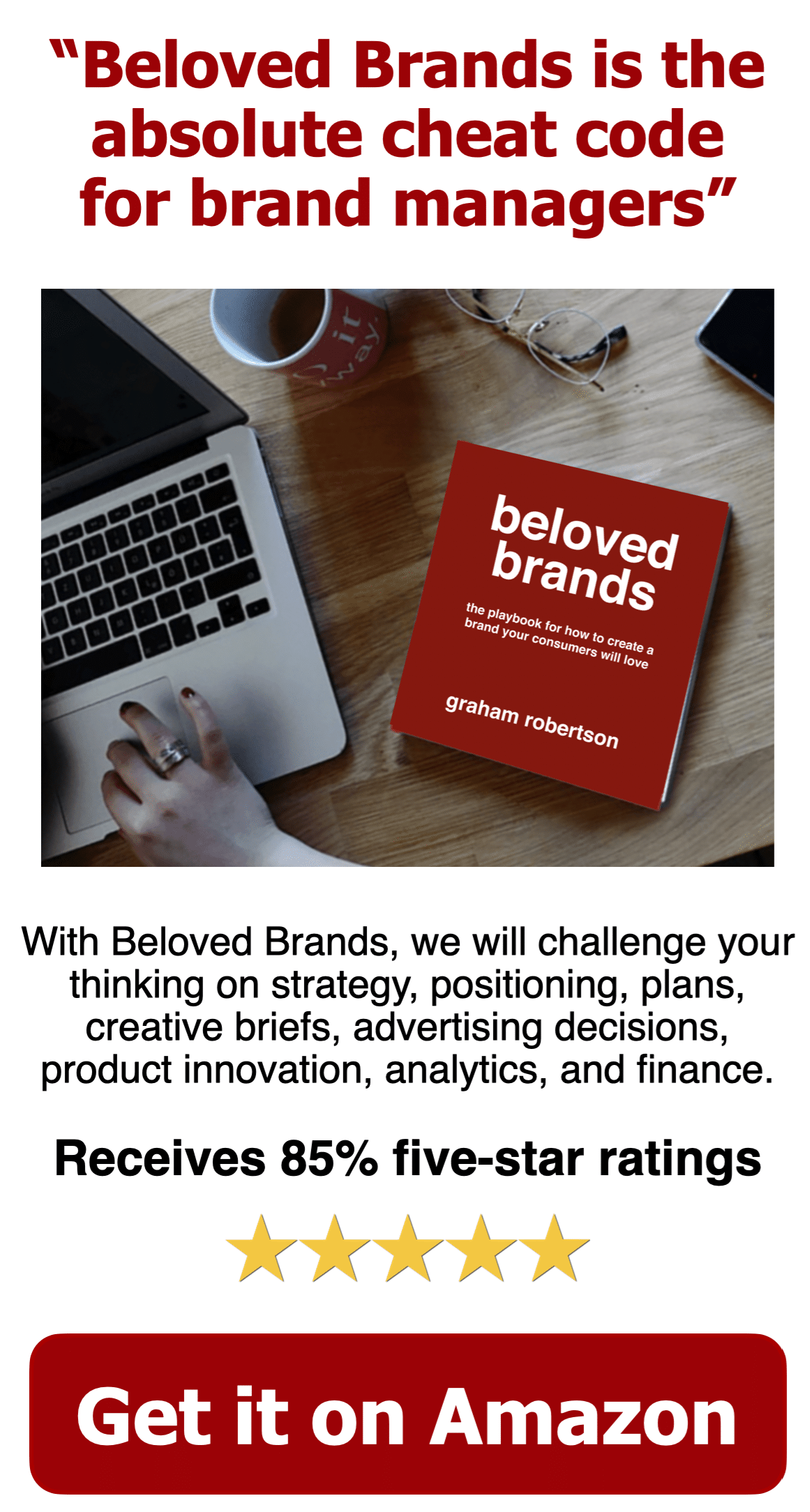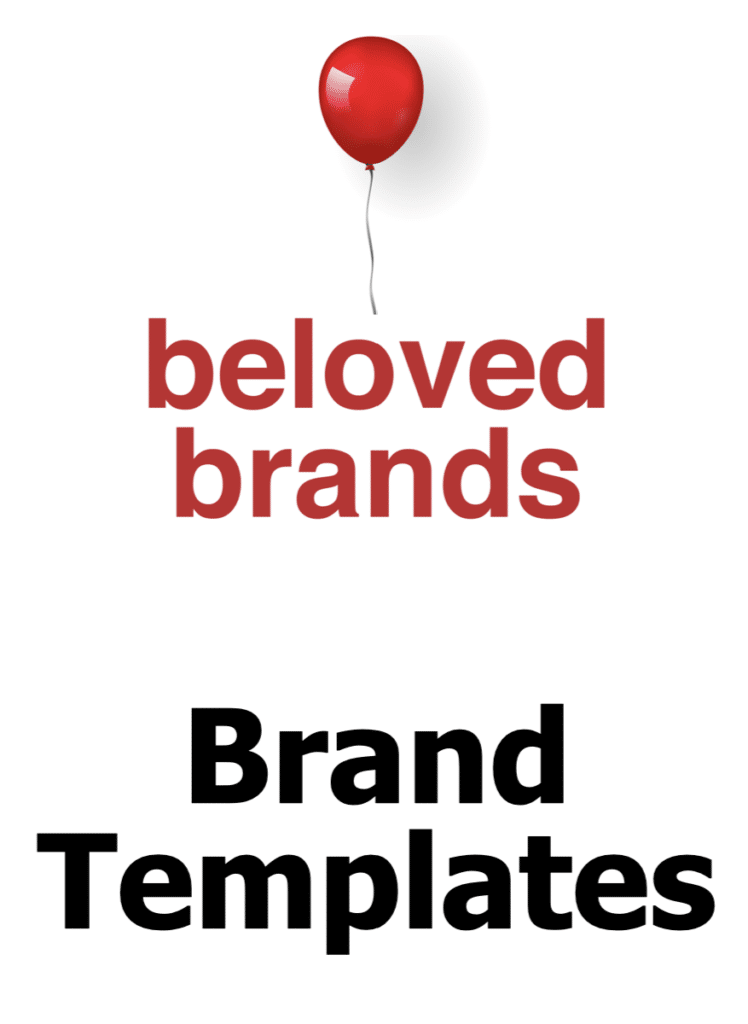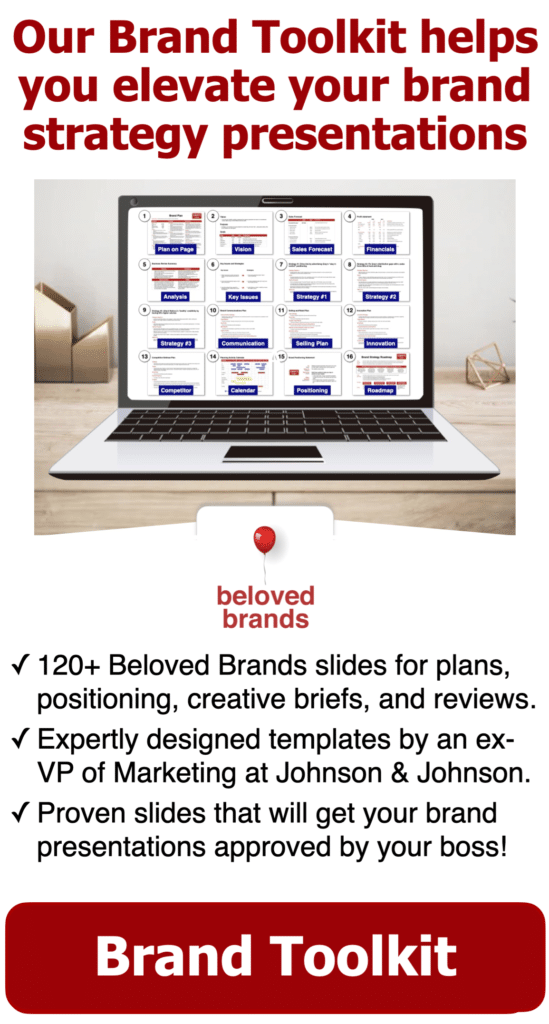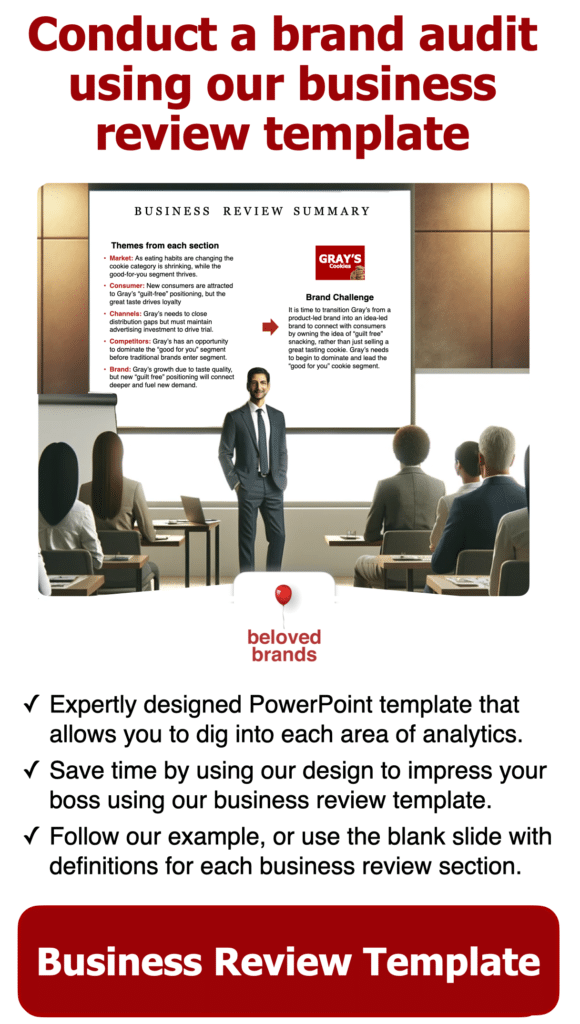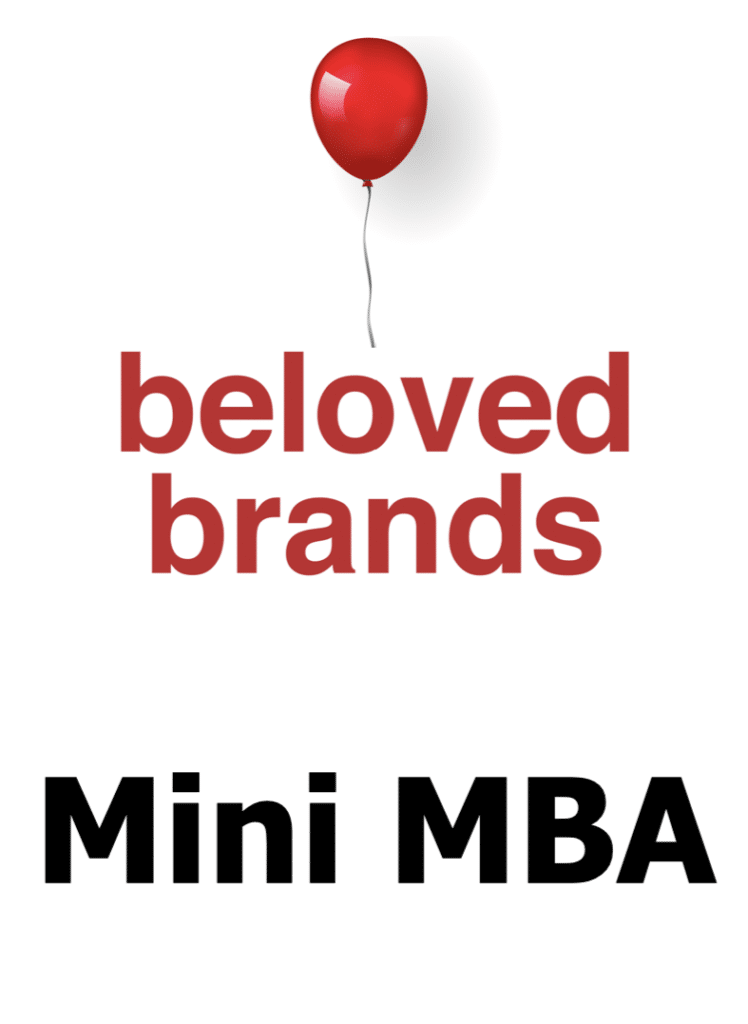In the realm of the beverage industry, where giants like Coca-Cola and Pepsi dominate, breaking through the saturated market can be a Herculean task. However, one brand that notably made a significant splash is Liquid Death. This intriguingly canned water company managed to capture consumers’ attention not just with its product, but through its audacious branding and marketing. Our Liquid Death case study will showcase some of the most creative advertising we have ever seen. That over-the-top creativity sends a signal to Gen Z consumers (under 25) that Liquid Death is the anti-corporate brand. We’ve seen this technique for the past decade in craft beers, but these ads go to a new extreme. Get ready.

Liquid Death was born from the vision of its founder, Mike Cessario, a former creative director in the advertising industry. His idea was simple: a canned, mountain spring water aimed at a demographic that had been previously overlooked by other water brands – the younger, edgier consumer.
At the heart of our Liquid Death case study, we will show how the brand is a brilliant disruptor brand. Strategically, their target is the young college kid who doesn’t want to drink but also doesn’t want to appear empty handed at parties or concerts. The secret sauce of the brand is that holding a Liquid Death can looks like you’re holding a beer.
Liquid Death Case Study - Table of Contents
Liquid Death success factors
Product and Packaging
Liquid Death differentiates itself in its simplest form – its product and packaging. Instead of plastic bottles which are common in the water industry, Liquid Death opted for tallboy aluminum cans, similar to those used by energy drinks or craft beers. The environmental angle is also a strong selling point. Aluminum cans are more recyclable than plastic bottles, aligning with growing consumer concerns about plastic waste.
Then there’s the name itself, “Liquid Death”, which serves to annihilate your thirst. It’s provocative, memorable, and establishes a strong brand recall.
Branding & Marketing Strategy
Liquid Death’s marketing took a radical departure from the tranquil images of pristine lakes or glaciers that are typically used to market bottled water.
Target Audience:
Our Liquid Death case study is a great example of using irreverent branding that targets millennials and Gen Z, populations that appreciate humor and authenticity, and brands that don’t take themselves too seriously. This demographic, often resistant to traditional advertising, was instantly drawn to Liquid Death’s offbeat approach.
Edgy Branding:
Their slogan, “Murder Your Thirst,” combined with skull imagery, gives the impression of a heavy metal band more than a water brand. This edginess not only distinguishes the brand from competitors but also resonates with consumers seeking alternative choices.
Engaging Content:
Liquid Death utilized social media platforms like Instagram, TikTok, and YouTube to disseminate catchy, humorous, and sometimes dark content. They produced viral videos and mockumentaries and even created a fictitious heavy metal band to promote the brand.
Environmental Activism:
By choosing aluminum over plastic and partnering with organizations to lead beach clean-ups and environmental campaigns, Liquid Death appeals to consumers who are environmentally conscious. Their initiative, “Sell Your Soul,” which allowed consumers to “sell their soul” in return for a free case of Liquid Death, drew attention to the brand’s commitment to sustainability. For every soul “sold”, Liquid Death pledged to donate $1.80 to clean up plastic pollution.
Reception and Impact
While some criticized Liquid Death for being gimmicky, its sales figures spoke louder than words. Not only did the brand succeed in making water “cool,” but it also expanded its product line to include sparkling water variants. Moreover, by 2020, Liquid Death had raised more than $33 million in funding, showcasing significant investor confidence.
Our Liquid Death case study highlights that in today’s age, consumers aren’t just buying a product; they’re buying into a brand’s story, ethos, and persona.

What is a disruptor brand?
Disruptor brands move into a blue ocean space, all by themselves.
Taking this Liquid Death case study shows how disruptor brands use a new product, distribution channel, target market or price point to appear so different that they could to be the only brand that can satisfy the consumer’s changing needs.
When successful, the disruptor brand repositions the major players, making them appear unattached to consumers.
While everyone wants a game-changer, it is a high-risk, high-reward competitive situation. The trick is you have to be “so different” to catch the consumer’s attention and mindshare. Being profoundly different increases the risk you may fail. Also, your success may invite other entrants to follow. At that point, you become the new power player of the new segment. Essentially, you have to continue attacking the major players while defending against new entrants who attack your brand.
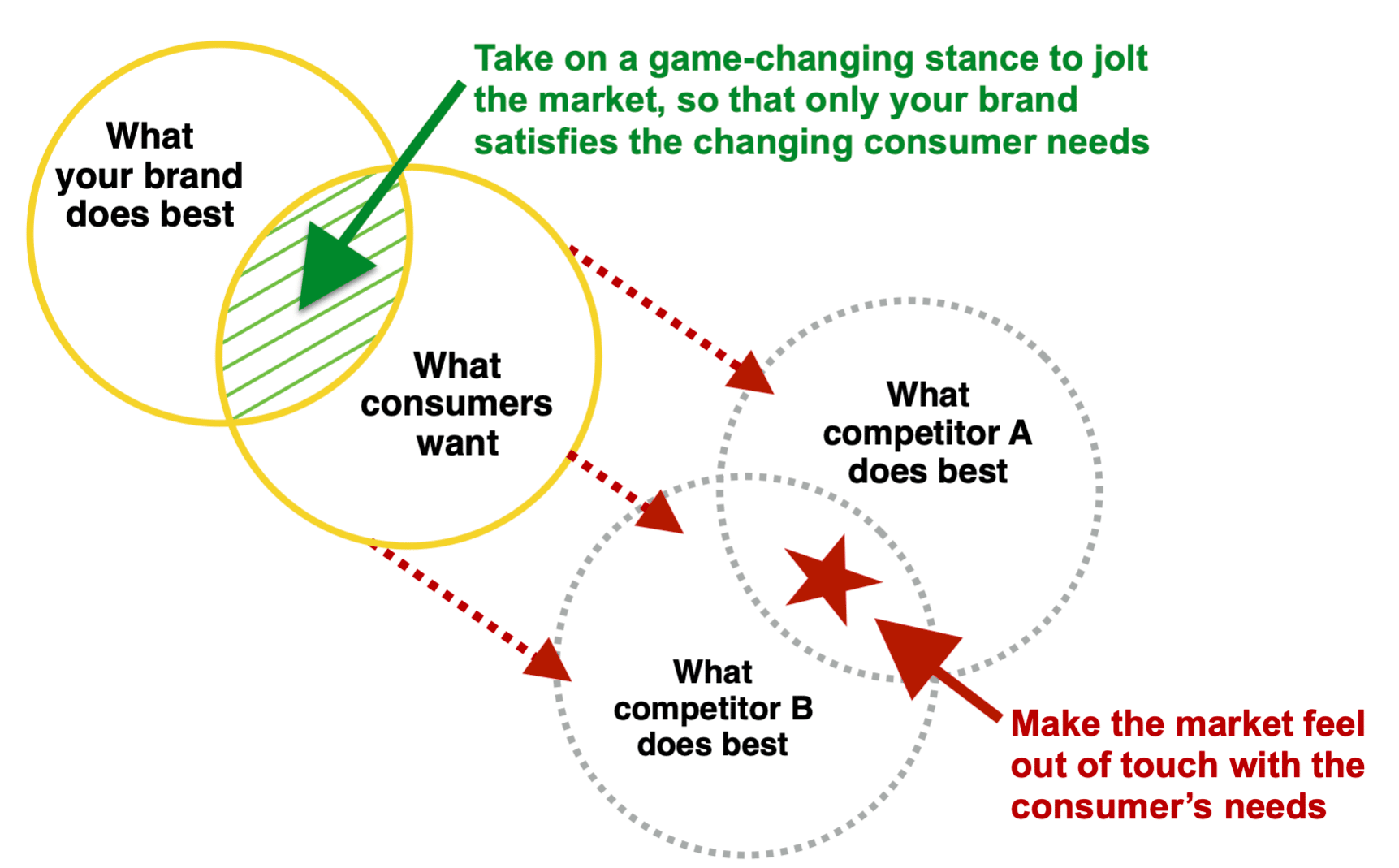
To illustrate, click on the Brand Strategy diagram to demonstrate how disruptor bands work.
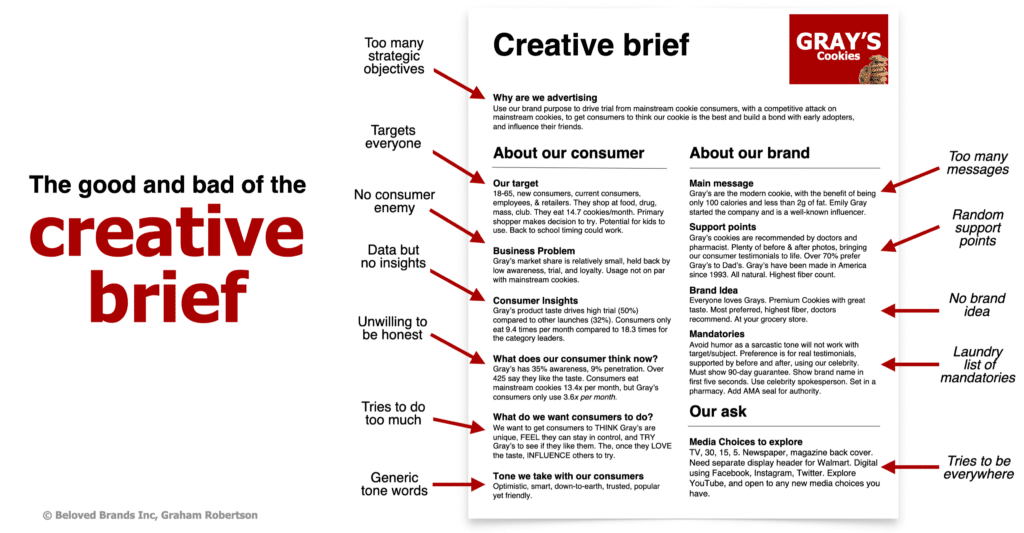
In the vast sea of consumer products, brands constantly vie for consumer attention. Standing out requires a unique voice, relatability, and often, a hint of irreverence. In this Liquid Death case study, let’s show two other brands who led the way with Dollar Shave Club and Dude Wipes. These brands that have managed to disrupt their respective markets using audacious marketing execution.
Examples of disruptor brands who have used great advertising
Dollar Shave Club
A great example of disruptive marketing execution, Dollar Shave Club arrived with a memorable and hilarious launch video that went viral. Their founder, riding through a warehouse and candidly discussing the high prices and pretenses of big razor brands, garnered immediate attention. They weren’t just selling razors; they were selling an attitude and a call to challenge the status quo. Their quirky ads were highly risky, but it’s fair to say that Liquid Death has taken this style to a new level—there is no way Gillette could make this ad.
To view the amazing Dollar Shave Club ad, click on the arrow.
Dude Wipes
Another brand example that looks like a great fit for our Liquid Death case study, Dude Wipes, started its journey with a simple premise: personal hygiene wipes for men. Its branding, full of casual humor and directness, sought to challenge traditional notions of masculinity. By addressing a genuine need (personal cleanliness) with humor and relatability, Dude Wipes stood out in the personal care market. Below is one of the Dude Wipes launch ads, which borrows a bit from Dollar Shave Club but takes it to a new extreme—there is no way P&G could make this ad.
To view the amazing Dude Wipes ad, click on the arrow.
Liquid Death's shocking creative advertising sets them apart
How they leverage humor and social media
In today’s digital age, marketing has evolved beyond mere product placement and traditional advertisements. Brands are expected to interact, engage, and resonate with their audiences uniquely. Our Liquid Death case study is a masterclass in leveraging humor, edginess, and social media platforms to create a buzz and establish brand loyalty.
The Social Media Landscape
Liquid Death primarily targeted millennials and Gen Z, two demographics known for their significant presence on social media platforms. To reach them, it was imperative that the brand executed a strong and coherent social media strategy.
Instagram: The Visual Storytelling Tool
Liquid Death’s Instagram page features a mix of humorous posts, mock advertisements, and fan-generated content. Their aesthetic leans heavily into the heavy metal theme, complete with illustrations of demons, zombies, and of course, skulls.
Interactive Content:
Liquid Death often creates polls, quizzes, and questions in their Instagram stories, ensuring they maintain a two-way conversation with their audience.
UGC (User Generated Content):
By reposting fan art, tattoos of their logo, or other Liquid Death inspired creations, the brand builds community and encourages further fan interaction.
User Generated Content that was reposted onto the Liquid Death Instagram page
To view the User Generated Content on the Liquid Death IG page, click on the arrow.
TikTok: The Viral Video Playground
On TikTok, short, engaging, and humorous content reigns supreme, and Liquid Death recognized this early on. This creative is so out-there that none of the big corporations could take such a risk. These are classic marketing execution for a disruptor brand that we might see with a local craft beer.
Mock Advertisements:
These short, funny snippets parody traditional commercials, often with exaggerated narratives that end with someone quenching their thirst with Liquid Death. These videos mock the expected, creating humorous and unexpected conclusions that resonate with TikTok’s younger demographic.
Challenges and Collaborations:
Our Liquid Death case study shows how the brand engages with popular TikTok influencers and encourages challenges, ensuring their brand is promoted organically and widely across the platform.
Liquid Death video on TikTok
In response to a comment from a consumer that they would rather lick sweat off a guy’s back, Liquid Death did this over-the-top video blind taste test as a response.
YouTube: The Home for Extended Content
While platforms like TikTok are meant for shorter content, YouTube provides a space for Liquid Death to delve deeper:
Mockumentaries:
Liquid Death has produced longer mockumentary-style videos. These faux-documentaries humorously delve into the “origins” of Liquid Death or the processes behind the brand, all the while keeping their tongue-in-cheek humor intact.
Behind-the-Scenes:
Offering a glimpse into the making of their campaigns or product processes, these videos further engage fans by making them feel a part of the brand’s journey.
Engaging with Criticism:
One key differentiator in our Liquid Death case study is its willingness to engage with fans and critics. They’ve used negative comments from their ads and turned them into hilarious content, endearing them to their audience and showing their resilience and humor.
One of their early ads - showing kids drinking like college kids
Celebrity endorsement - Martha Stewart chops off hands
Liquid Death is building on the shoulders of Red Bull
Borrowing Red Bull's Disruptive strategy
Our Liquid Death case study is similar to Red Bull’s entry into the market during the 1990s both represent significant disruptions in the beverage industry, but they were executed with different nuances given their distinct product offerings and the times in which they launched. However, there are some notable similarities:
Target Audience:
Both brands targeted a young demographic. Red Bull aimed at the active, adventure-seeking youth, while Liquid Death sought to appeal to the edgy, counter-culture youth who appreciated humor and irreverence.
Challenging Conventions:
Both brands disrupted the norm. Before Red Bull, the energy drink market in the West was virtually non-existent. Red Bull introduced not just a new product but an entirely new category. Similarly, Liquid Death transformed the perception of water, shifting it from a basic necessity to a product with attitude.
Unique Marketing Campaigns:
Red Bull’s marketing was pioneering, with the unforgettable tagline, “Red Bull gives you wings.” They also delved into event sponsorships, especially in extreme sports, thereby establishing themselves as a brand associated with adrenaline and action. Liquid Death, meanwhile, used irreverent humor, edgy designs, and viral social media campaigns to make a statement.
Packaging:
Both Liquid Death and Red Bull opted for tallboy aluminum cans, which made them stand out in their respective markets. While cans are standard for sodas, they were not the norm for energy drinks or water.
Word of Mouth:
Both brands heavily relied on word-of-mouth marketing, particularly during their early days. Red Bull initiated this by handing out free samples at college campuses and events, while Liquid Death’s audacious branding ensured that people talked about it.
